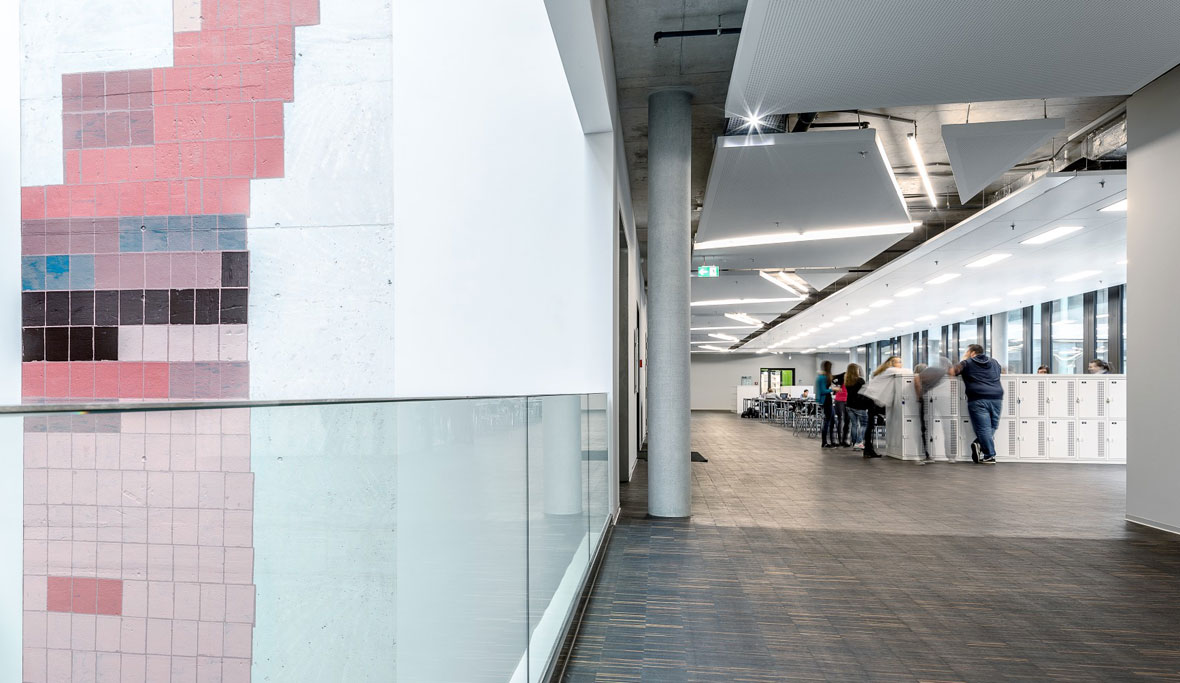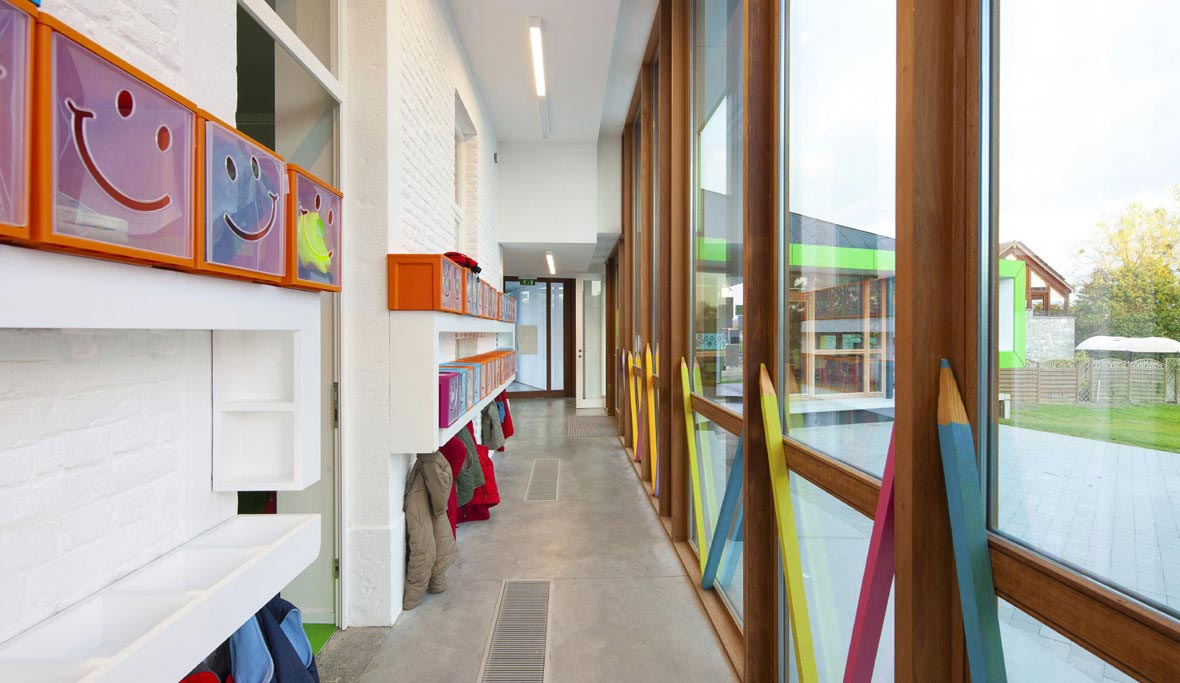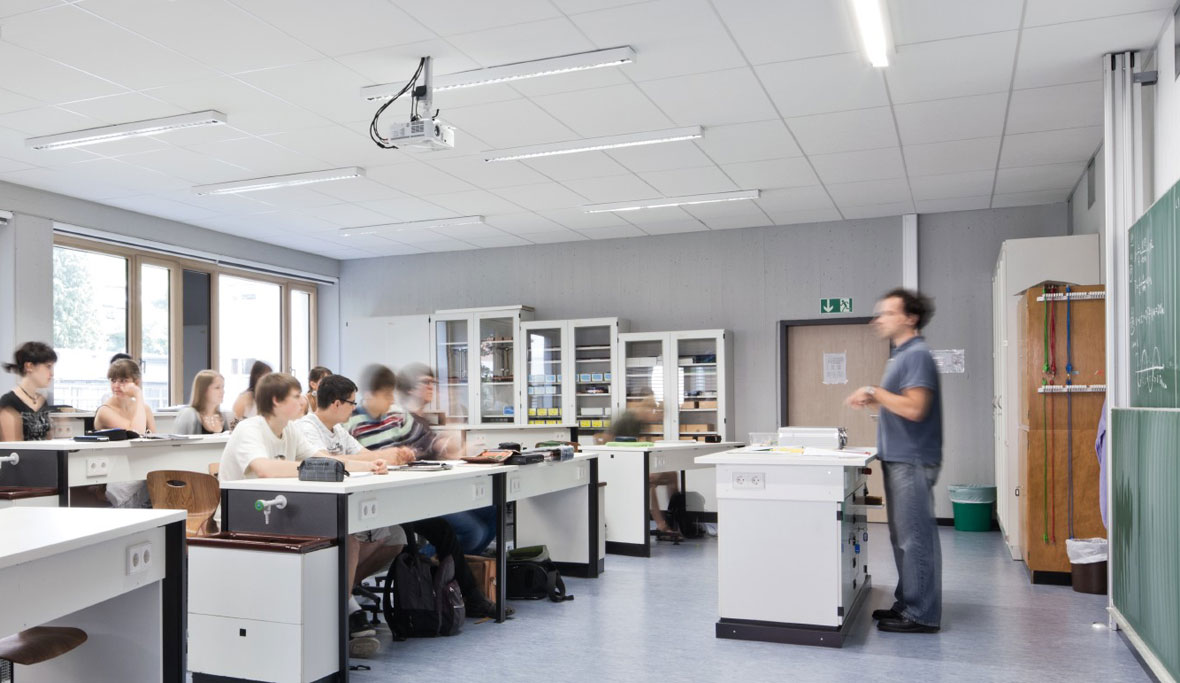Learning success
Can the right lighting have a positive influence on how well children learn at school?
Scientists have now succeeded in analysing these processes, which occur at hormonal level, and making them comprehensible for us all. We now know that the light around us influences what is known as the circadian rhythm, a sort of internal biological clock that operates 24 hours a day. Melatonin, the body’s own sleep hormone, the production of which is greatly influenced by the surrounding light, plays a significant role in these processes.
It assumes control of human wake and sleep phases. Light slows down or suppresses the production of melatonin and makes us active. In particular the colour particles in light are decisive in setting our biorhythm: Blue light has an activating effect, warm white light with a high proportion of red a calming effect. Permanently exposing our body to light whose colour spectrum our biorhythm needs helps us be as efficient as possible during the day and sleep well at night.

Light management systems for intelligent lighting
Yet we know from personal experience how difficult it is in everyday life to comply with this system. Schoolchildren, for example, whose internal clock on winter mornings is still set to “sleep”, although their teacher already demands full concentration, find themselves in a situation in which their biorhythm does not correspond to the demands of everyday life.
It is precisely here that dynamic light and light management systems that are not dependent on natural daylight can help, because the spectral composition of natural daylight can be reproduced. Artificial light colored with the appropriate colour can generate an effect in people comparable to the real thing. Light management systems measure the incident natural daylight and bring the light in the classroom to the desired level.
This way the duration and intensity of the light, as well as the colour temperature, can be controlled. Specifically emphasizing blue natural daylight particles strengthens the schoolchildren’s natural biorhythm, their ability to take things in, and their efficiency.

Lighting for black- and whiteboards

Yet it is not only biorhythm that influences schoolchildren’s learning behaviour. Indeed, shadows, reflections, and too bright light in some places make the information on the whiteboard less easy to see, such that their concentration begins to flag and they learn less. Increasing the brightness of vertical light has proved its worth in solving these problems.
In order to guarantee sufficiently bright and, most importantly, even lighting around the whiteboard, this should on average be 500 lux. With regard to biologically effective light, LED-based solutions stand out. White LED luminaires in particular have proved their worth, because they not only support our circadian rhythm, but are also extremely efficient. However, regardless of where light is sourced, used the right way it provides positive impulses for increased motivation, efficiency, and wellbeing in schools.